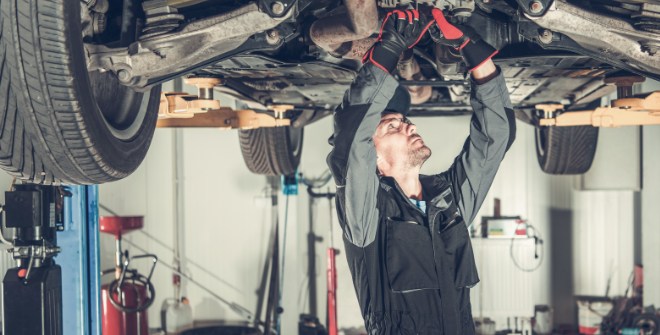
The Relationship Between Temperature & Tire Pressure
The importance of tire pressure can’t be understated when it comes to your car’s operation. Tire pressure can influence everything from ride quality to fuel economy to tire and brake life to even the reliability of your vehicle as a whole. Therefore, it’s extremely important to make sure the pressure in your tires remains within operating guidelines at all times.
However, arguably the biggest factor that influences your tire pressure isn’t even something you can really control. The weather, and primarily the temperature outside, can have a heavy influence over the air in your tires. There’s a pretty simple reason for this: air is a gas, which expands and contracts based on the temperature outside. The warmer the temperature, the more energy the air molecules have and thus the faster they move, which leads to increased pressure. The opposite happens when the temperature drops.
So when you have no control over the temperature, what can you do to make sure your tire pressure stays constantly at a viable level? Here are a few tips you can follow.
Check Your Tire Pressure Regularly
It’s a pretty smart idea to regularly check your tire pressure to make sure it remains at a viable level. The good news is this is fairly easy. If you have a newer car, your car itself is probably keeping track of your tire pressure through a TPMS, or “tire pressure monitoring system.” This simple system uses a sensor in each tire to keep tabs on the pressure, and notifies you when the pressure in a tire dips below suggested operating levels.
If your car is older or isn’t equipped with one of these devices, then it’s strongly advised you check your tire pressure after every other time you fill up with fuel. Doing so is simple: all you need is a tire pressure gauge (which cost about a dollar or two at your local auto parts store). Simply press the gauge on your tire fill valve and it should give you an accurate reading of your tire pressure. If one or more tire is low, use a fuel station’s air pump to bring it back up to an appropriate level.
Fill When Appropriate
If you’ve got a tire that’s low on pressure, you’ll want to make sure you fill it. However, how do you know when a tire is low? When you consider that air expands as temperatures rise, how do you know that your tire is truly in need of some air? Simple: check the pressure when your tires are cold. In other words, when your car has been sitting in the shade for some time, or you’re about to start it after it has sat overnight.
As you drive, the friction between your tires and the road generates heat, which causes your tire pressure to rise slightly and could give you a false reading. Checking the tires while they’re cold can ensure a more accurate and safe reading to go off of.
When you do fill your tires, fill them to a value on the low end of your tire’s operating range. In other words, if your tires are rated for anywhere from 35 to 40 PSI, try to keep the pressure anywhere from 35 to 36. That way when your tires heat up, you have plenty of room for the air to expand and pressure to rise safely.
Adjust Pressure in Extreme Weather
When it’s blistering hot outside and you know you have a lot of miles to drive, you may want to consider giving your tires a little bit of extra breathing room. Taking a couple pounds of air out of your tires (while still keeping them within your normal operating range) can give the air in your tires the ability to expand easily once it becomes extremely hot as the miles tick by. If you live in an area where the weather gets extremely cold, you may want to consider the opposite. On days where you know the weather is cold, the air in your tires may never get to a “warm” temperature, so you should definitely compensate by putting more air in.
Don’t Overload Your Car
There’s another way you can put a lot of stress on your tires is by overloading your car. Every car has a maximum load capacity, which can usually be found on the door jam on the driver’s side as well as printed on your tires themselves. The more you put in your car, the more strain you put on your tires (and other important components as well). Approaching this maximum capacity puts a lot of added strain on your tires, which can cause air to leak out of your tires. This becomes even more critical on hot days, where expanding air mixed with a heavy load could cause tire damage, or worse, a tire burst.
About Christian Brothers Automotive
Christian Brothers Automotive has sought to change the way you think about car care. Since opening our doors, we’ve operated on one consistent principle: love your neighbor as yourself. This “golden rule” has helped us become one of the leading names in complete automotive care for all types of vehicles. Whether you need a simple tune-up, major engine repairs, or even a pre-purchase inspection, our ASE-certified technicians get the job done right at a fair and reasonable price. We even a convenient shuttle service and comfortable waiting area while the work gets finished!
If you need your tires changed, rotated, or serviced, call your local Christian Brothers Automotive at for an appointment!
Posted by, Christian Brothers Automotive


[1].jpg)
Sunwash-Tech-with-Customer.jpg)

